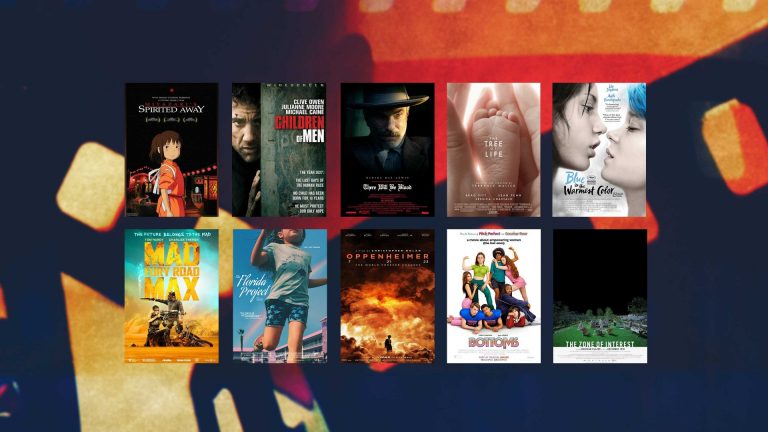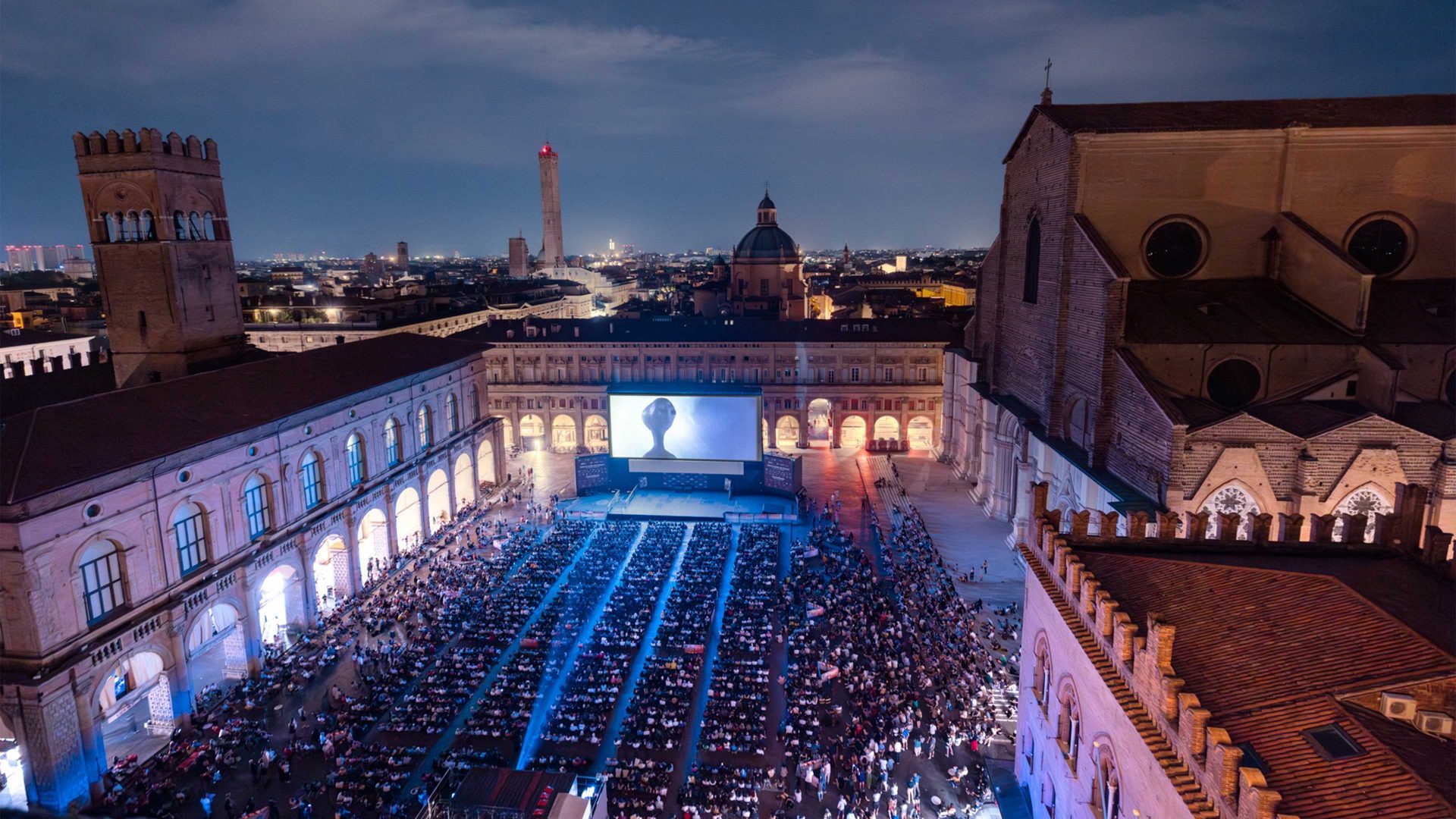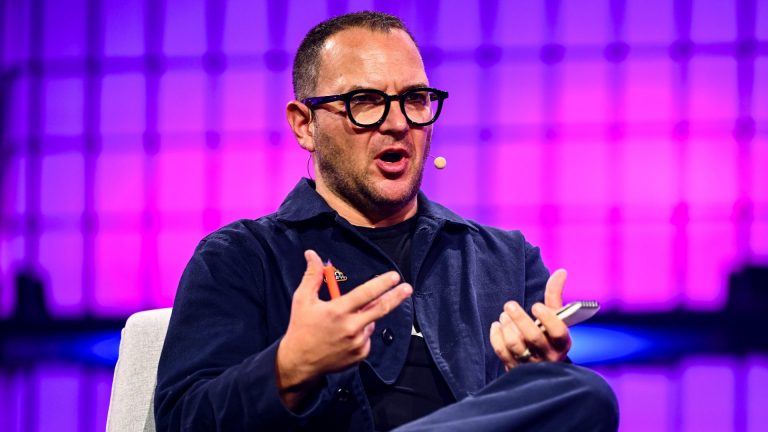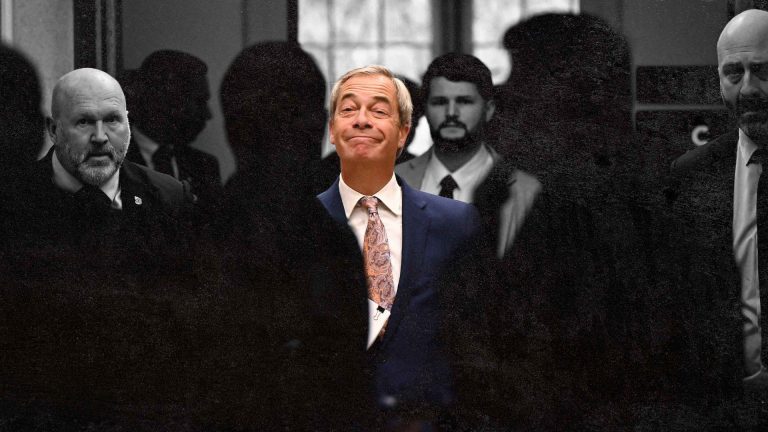For years, Bologna has been known as the red city, both because politically it tends to skew left and because the walls of the buildings are daubed with a reddish ochre. The food is famous: home made pasta, mortadella and lasagna.
Spaghetti bolognese is more an invention of Italian restaurants abroad, but the meat and tomato sauce can be had with freshly made pasta and you will want to keep the memory for months. One of my colleagues made the mistake though of asking for his sauce without tomato and was sternly told that the sauce was simmered for fourteen hours, so they wouldn’t be making a fresh batch for him anytime soon. My advice when visiting Italian restaurants: ask “what’s good?” and eat that.
After the meal we went and sat out under the stars and watched a man so hungry, he ate his shoes, twirling the laces like we had the spaghetti. The audience of five thousand roared with laughter. The poor man was freezing but we almost looked longingly at the blinding blizzard of snow. Even at eleven o’clock in the evening, the heat was radiating from the stones of the square.
But it didn’t matter. No one was going home. The film ended to a roar of appreciation and applause from the crowd. “The best film I’ve seen this year,” a local said as she walked off to find a late night ice cream. Charlie Chaplin’s The Gold Rush is one hundred years old and still slaps.
During the next few days, the long porticoed avenues provide some relief from the heat that blasts from the June sky above, as I make my way from one cinema to the next to see (how else to describe them) a bunch of old movies.
Cinema Ritrovato (“rediscovered cinema”) is a film festival which celebrates old films. These can be silent films which might get shown with a live score, or hidden gems that have been lost from view for years. Last year, I watched an old Cary Grant comedy which stands comparison with His Girl Friday and Bringing Up Baby, and yet had been out of circulation for decades.
This year there are retrospectives of Katherine Hepburn movies as well as the black listed director Lewis Milestone. “Milestone was born in Odessa, and we have another strand at the festival dedicated to the notion of Odessa, the Ukrainian city,” Ehsan Khoshbakht one of the chief curators of the festival tells me when we meet in the cool of a local cafe. “He moved to the States in 1913 and then later to Hollywood, where he made most of his films.”
One of those films was All Quiet on the Western Front, an adaptation of Erich Maria Remarque’s antiwar novel. Milestone made it in 1930 and the film was massively successful though it was banned in Italy, France and Austria due to its pacifism. In Germany Nazi thugs used it as an excuse to disrupt screenings. Screen Daily critic Lee Marshall was watching the film for the first time. He told me: “There’s a scene in it which is as ferocious as anything in Saving Private Ryan. Just relentless.”
Later, Milestone was hauled in front of the House un-American Activities Committee where he refused to cooperate, or to name names. “It was the beginning of the end for him,” Ehsan says. “He never recaptured the glory of the 30s and the 40s.”
Critics and filmmakers from around the world flock to Bologna to introduce their favorite films or indeed their own. Molly Haskell, the author of From Reverance to Rape: the Treatment of Women in the Movies is here curating a retrospective of Katherine Hepburn films. “It’s so incredible,” Ehsan tells me. “There are similarities between Katherine Hepburn’s character and Molly. The attitude, the snappy, sharp and shrewd mannerism that Molly has reminds me of Hepburn.”
Terry Gilliam introduced a screening of his iconic dystopian film Brazil in Piazza Maggiore and the next day told a sold-out audience about his travails not only in getting the film made but more importantly going mano a mano with Sid Shienberg, the head of Universal Studios, to get the film released. His tactics included taking out a full page ad in Variety and bussing film critics to Mexico to see the film. Gilliam’s case was helped somewhat by the fact that Shienberg’s wife, the actress Lorraine Gary (Ellen Brody from Jaws) was a huge fan of the film her husband didn’t want to release.
Suggested Reading


Are these the best 10 films of the 21st century so far?
Even a normally publicity shy filmmaker such as Jonathan Glazer was on hand to talk about his career and introduce his 2023 film, The Zone of Interest, his first major public appearance since he won an Academy award for best foreign language film. Asghar Farhadi and Jim Jarmusch, along with Brady Corbet were also on hand to talk about their craft and introduce their films.
These “audiences with” events take place in the refurbished art deco Cinema Modernissimo, where every seat comes with the name of a legend of cinema embroidered to the back. Some are thrilled to get Groucho Marx or Chantal Ackerman. Less so Roman Polanski.
Unlike most festivals though, there’s no red carpet, no gaggle of reporters, no interviews or junkets to attend. People are here purely to see films and talk about them. The mission of the festival is, at its heart, to showcase the restoration that various bodies, including the cineteca of Bologna, accomplish every year.
This is not just to provide cinephiles with high quality box sets – many a restored film will be preceded by details of the restoration and Bologna Cineteca will frequently be credited. “This is the beating heart of the festival,” Ehsan says. “We want you to see the films that you couldn’t see before, or were in terrible shape. We are trying to set the record straight, as far as film history goes by rediscovering films. And that extends to the political repression.
“Perhaps, the finest example is the Iranian film from 1972 called The Postman by Dariush Mehrjui, a great filmmaker who was murdered in October 2023. This film was totally unavailable. The producer of the film Mehdi Missaghieh was in prison after the 1979 revolution because he was a member of the Baháʼí Faith, and all his assets were confiscated.
“Those who knew him told me that after the revolution, he was like a ghost. This was perhaps one of the most significant producers of pre-revolutionary Iran. This film can now be seen. It is a very, very dark film, but it’s so timely, and it’s so remarkable to see it back on the screen.”
What people need to appreciate is that film stock decays very easily, Ehsan tells me. Books can be read thousands of times without much damage, whereas every projection damages a film, scorches it and wears it thin. New prints need to be made if the film isn’t going to degenerate until it is unwatchable. However, the process is expensive and few labs can provide the service.
And this is happening at a moment when there is a resurgence in interest in film history and an urge to watch some of the films from the past as they were meant to be seen. “The hunger for films of the past is greater than ever, and the desire to go and explore is greater than ever,” says Ehsan. “The beauty of it is that it’s not just major classics but it’s also a Hong Kong film that you haven’t seen before, or a Brazilian film, or an underground Italian film that you haven’t even heard of.”
New prints need to be made, and many of the restorations circulating are already a quarter of a century old. In film as in life, if you want to preserve something you have to keep changing it. “This is a major issue,” Ehsan says. “This needs to be discussed in public. For instance, in Britain, the budget for the British Film Institute to make new prints is meager. Otherwise, most films are restored and shown digitally, and I think it’s very important for people to realize that it’s important to keep that original format in which the films were made, to keep that alive.”
And we’re not just talking ancient black and white films anymore. One of my favourite experiences at the festival is seeing Michael Mann’s debut Thief starring James Caan on the big screen for the first time. It’s glorious. And it’s forty-four years old. It was screened in digital 4K taken from a restoration approved by Mann himself. The fact it’s shown as a DCP (Digital Cinema Package) can be controversial and some purists won’t attend screenings if the film isn’t film.
But I have to ask: why isn’t digital good enough especially if it’s cheaper? Ehsan shakes his head. “Can you imagine a Tate Modern exhibition entirely based on exhibiting perfect replicas of the original work, printed digitally to perfection? And because it’s digital, you can also touch any painting you like. You can lick it. You can do whatever you like. Can you imagine that it’s always the same? What’s the difference? You won’t be able to tell the difference, except that it’s not the actual paint on the canvas. It’s like that because it is important to see how they look. Because films, no matter how careful, how meticulous you are during the restoration process, they change when they migrate from celluloid to digital. They lose something vital. They are no longer the same.”
I feel like my colleague asking for no tomato in his sauce. Bologna is a city where they know how to keep things real.











